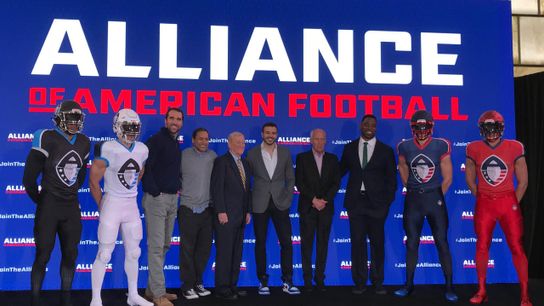The Alliance of American Football launched last weekend, and a successful launch it was. The league drew more viewers to CBS on Saturday night than the NBA had on ABC, and moving forward the league will have each game broadcast nationally between CBS Sports Network, Turner and the NFL Network.
Moreover, the AAF's proof-of-concept showed a league that intends to stick around beyond just this season. Co-founded by former NFL general manager Bill Polian and Charlie Ebersol, son of longtime NBC Sports chairman Dick Ebersol, the league pursued the best available talent to fill out both its rosters and its coaching staffs -- and is willing to pay up to get it.
In conversations with sources around the league, FootballScoop has learned that AAF head coaching salaries break out roughly as follows:
-- $500,000 for head coaches
-- $200-250,000 for coordinators
-- $75-150,000 for position coaches
While those salaries would not lure active coaches from the NFL or FBS, the AAF is paying above market rate for everything from FCS on down. Furthermore, those salaries come with full health benefits and perhaps the most important benefit -- time off. The season runs from January through April and, while offseason duties vary from team to team, sources indicated it's nothing approaching the level of offseason expected of coaches elsewhere in professional and college football.
A review of publicly-available AAF rosters found each staff employs between 11 and 13 total coaches, putting a ballpark figure for coaching staff expenditures at $2 million per staff and $16 million for the entire league. Polian favored established names -- Steve Spurrier, Mike Riley, Mike Singletary -- to serve as its inaugural roster of head coaches but, moving forward, a half-million dollar salary would be a tempting offer not only for lower-division coaches, but even active Group of 5 coordinators.
“People don't really appreciate what an O-lineman and a D-lineman goes through... there’s impact on every snap of every play." - Matt Campbell, Iowa State University. Get a quote for team pricing!
Again, this is where the AAF's top-down management structure works in the league's favor. All eight teams are managed as one entity -- funded by a group of investors under the umbrella of Legendary Field Exhibitions, LLC -- instead of relying on a traditional ownership structure as seen in the major sports leagues. In a minor league setting, this often becomes a race to the bottom as team ownership looks to cut corners by slashing player and coaching salaries.
Every move from the AAF has indicated it sees itself as a spring football league that is here to stay -- which would break recent precedent. The USFL lasted three seasons in the mid-1980s before an ill-fated move to the fall killed the league. The first iteration of the XFL made it one season. The United Football League lived for four before it folded in 2012. The gold standard is the American Football League, which lived for the entirety of the 1960s before its 10 teams merged with the NFL, but that's a relic of a bygone era.
For coaches weighing a move from the FCS or Division II, the shaky history of the spring professional football industry is the biggest sticking point of remaining at college football's lower levels: your school may not be able to pay you as much, but at least you know it'll still field a team in 2022.
Absent of that, though, the Alliance of American Football has positioned itself as an attractive option for football's best coaching talent that isn't in the NFL or FBS.
